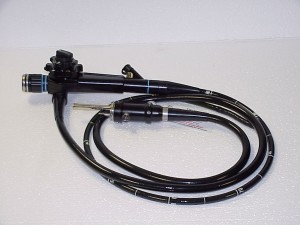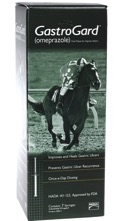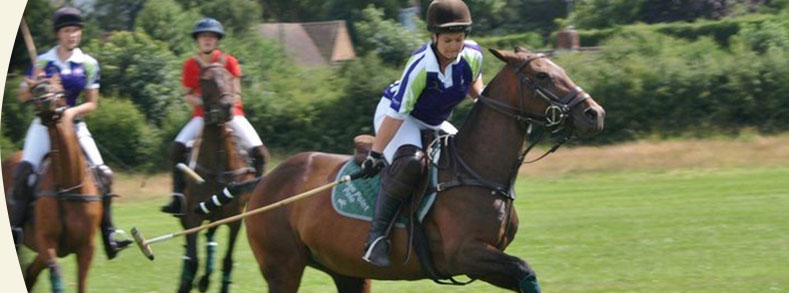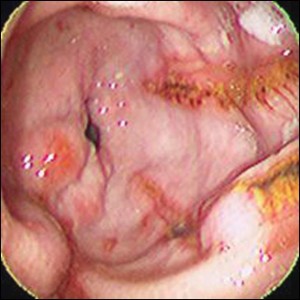Equine Gastric Ulcer Syndrome (EGUS) incorporates a group of distinct disorders that can affect horses of all ages. The disorders primarily affect the stomach, causing spontaneous erosion and ulceration of the gastric mucosa.
There are four different disorders identified. These include:
1.Squamous Mucosal Ulceration
3.Neonatal Gastric Ulceration
4.Gastroduodenal Ulcer Disease
This article will focus solely on Squamous and Glandular Ulceration, the two disorders that are most frequently seen amongst adult horses. Squamous ulceration is more prevalent than glandular ulceration. The reported rates of squamous disease are 50-90%, with those in race training carrying the highest risk of 90-100%. EGUS has a massive economic impact due to its effect on performance and the high cost of therapeutic and prophylactic medication.
What Clinical Signs Should You Be Looking Out For?
Unfortunately they are often vague and non-specific, however, here is a list of what to look out for:
- Reduced appetite for hard feed/ concentrates and slower consumption
- Loss of condition/ Struggling to maintain condition
- Colic: Acute or recurrent? Can occur especially after eating
- Excessive periods of lying down
- Poor hair coat
- Change in demeanour – aggressive/ nervous attitude
- Girth pain
- Frequent stretching to urinate
- Intermittent Diarrhoea
- Poor Performance
How Is A Diagnosis Reached?
 The gold standard procedure for diagnosing Equine Gastric Ulcers is via Gastroscopy. This involves passing an endoscope down the horse’s oesophagus into the stomach enabling visualisation of the entire stomach lining and the beginning of the duodenum (small intestine).
The gold standard procedure for diagnosing Equine Gastric Ulcers is via Gastroscopy. This involves passing an endoscope down the horse’s oesophagus into the stomach enabling visualisation of the entire stomach lining and the beginning of the duodenum (small intestine).
For the procedure to be carried out horses must be starved for 12 hours prior to undergoing the gastroscopy and water is usually withdrawn 2 hours prior to the procedure ( see bottom of page) . The procedure is carried out under standing sedation and is usually tolerated well by most horses.
Ulcers are graded using a grading system from 0 – 4. Grade 0 indicates the presence of no ulcers and an intact healthy stomach lining whereas Grade 4 indicates extensive lesions with apparent deep ulceration. The squamous and glandular parts of the stomach can be graded separately or together.
It should be noted that sometimes the correlation of endoscopic findings and the degree of clinical signs are not linked.
What Treatment Options Are Available?
Treatment is aimed at medical management and implementing various environmental strategies to try and reduce the incidence of gastric ulceration.
 The aim of medical treatment is to reduce gastric acidity. There are various drugs used to do this, however, the gold standard and most commonly used drug of choice is Omeprazole, otherwise known as ‘Gastroguard’. This suppresses gastric acid production for approximately 24 hours. The recommended treatment course is 28 days, however can be shorter. Omeprazole should be given 30-60 minutes before feeding in the morning. Half doses can be used as a preventative measure.
The aim of medical treatment is to reduce gastric acidity. There are various drugs used to do this, however, the gold standard and most commonly used drug of choice is Omeprazole, otherwise known as ‘Gastroguard’. This suppresses gastric acid production for approximately 24 hours. The recommended treatment course is 28 days, however can be shorter. Omeprazole should be given 30-60 minutes before feeding in the morning. Half doses can be used as a preventative measure.
Other medical treatments include:
- Histamine Type 2 Receptor Antagonists i.e. Ranitidine and Cimetidine
- Anta-Acids
- Mucosal Protectants i.e. Sucralfate
- Antibiotics and Probiotics
However, it has been found that these are usually not suitable to treat gastric ulceration alone and some have poor efficacy.
Environmental Strategies aim at addressing the Risk Factors for Gastric Ulcers. Risk Factors and Environmental Strategies include:
| Risk Factors | Environmental Strategies |
| · Low Forage DietHigh Concentrate DietIntermittent Starvation | Ensure horse is receiving adequate forage in diet and it is in continuous supply· Can supplement feed with corn or rapeseed oil (45-100ml/day) – potentially improves glandular ulcer healing |
| · Water Deprivation | ·Ensure horse has a continuous water supply |
| · Intense/ Increased Exercise | ·Give horse a small forage meal 30 mins before exercise to help limit splash back of acid and ulcer formation |
| · Regular/ Prolonged Transport | |
| · Management/ Housing Change | |
| · Weaning/ Movement to a New Home | |
| · Prolonged Stabling | ·Encourage turn out |
| · Stress | Use of mirrors in stables if horse stressed by staying in |
| · NSAIDs i.e. Bute | However it is reported that normal dosing regimes haven’t been proven to induce ulceration |
| · Gastric Bacteria – There are 2 types of gastric bacteria that can be involved in the development of EGUS: opportunistic bacteria and gastric adapted bacteria |
NB: Starving Protocols For Gastroscopy
AM SESSIONS:
- Food out @ 6pm the evening before
- Stable overnight (ensure they don’t eat bedding)
- Water out 2 hours before gastroscopy
PM SESSIONS:
- Food out @ 11pm the evening before
- Stable overnight (ensure they don’t eat bedding)
- Water out 2 hours before gastroscopy














